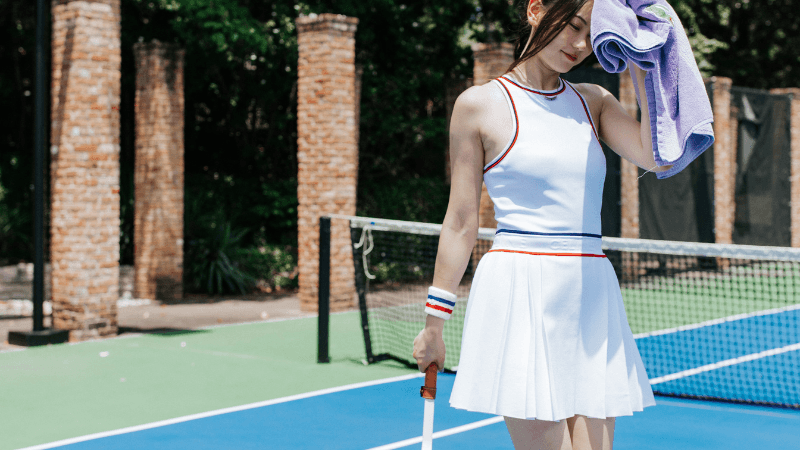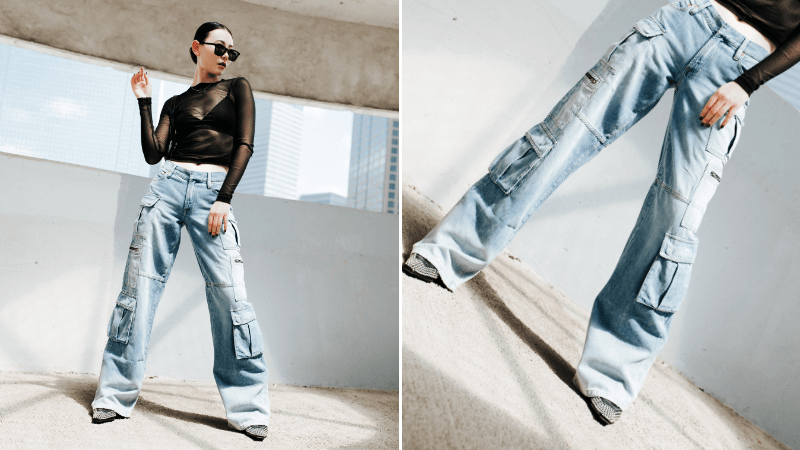Nicklas Skovgaard Is Full of Questions
The Danish designer creates a world of perverse whimsy, driven by his own curiosity.

Oftentimes, the most indelible outfits we encounter in the wild are the ones that make us want to know the wearer more deeply. Questions we may never get the answers to, but ones that better acquaint us with our own taste by serendipitously challenging or substantiating it. This same curiosity spurred Danish designer Nicklas Skovgaard’s interest in fashion, and his pursuit continues as he keeps his four-year-old womenswear brand full of whimsy.
Fifteen years ago, Skovgaard discovered Tavi Gevinson and her influential blog Style Rookie. Growing up in Thurø, a small Danish island of about 3,000 people, Skovgaard only had access to fashion by flipping through the pages of glossy magazines, usually American Vogue, which he could only obtain by trekking beyond his hometown to a larger city. The internet became his fashion trove. He browsed the now-defunct Style.com to watch Tim Blanks’s show reports (“I can still hear the opening melody of the videos”); he listened to Chanel’s recap podcasts (“I’d be sitting in school listening on my iPad”); and, ultimately, he found his people, scrolling through Danish blogs (“It felt like making new friends in the local area that cared about fashion as much as I did”).“I found out you could share your thoughts on fashion, share what you were wearing and buying, share what collections you liked, and do all of these DIY projects,” says Skovgaard. “All of a sudden fashion was available to many more people, it was something you could go online and find.”
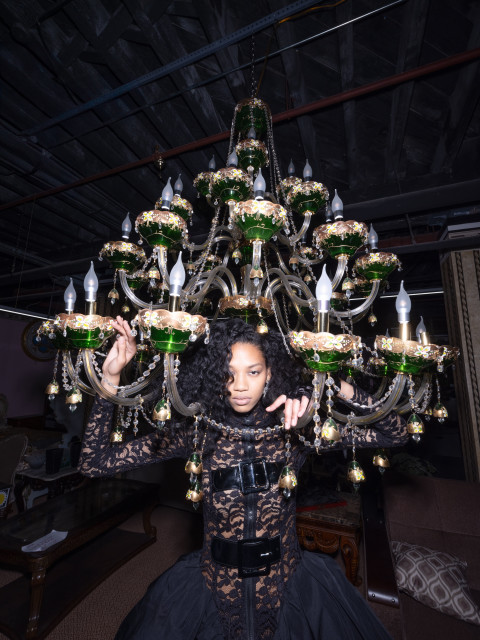
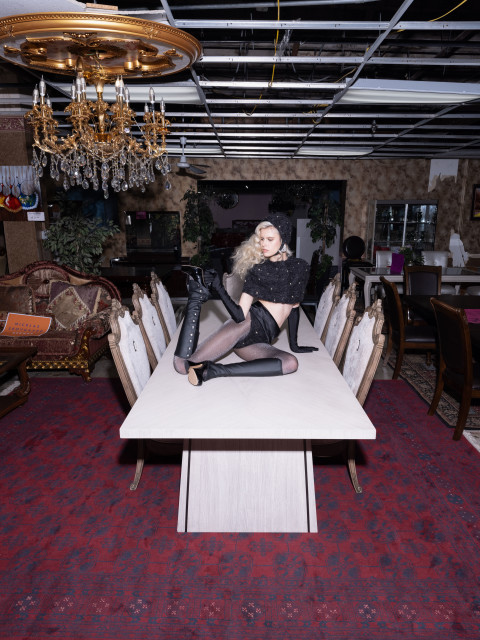
Awestruck, he started a fashion blog of his own, sharing his outfits, mostly sewn DIY versions of things he liked on the runway or olio local thrift store finds, and even skipping school—with his mother’s permission—to attend Copenhagen Fashion Week. Online, his inquisitiveness led him to labels that inspired him, like Maison Margiela and Comme Des Garçons (both of which had accessible H&M collections). “A lot of the magazines I was reading were a bit more commercial, so seeing these noncommercial brands was so eye-opening for me,” says Skovgaard. “It has a lot to do with why I really started loving fashion. [It] was because I saw what you could do with clothes, that they could be more than something you just put on. They could evoke a feeling.”Nicklas Skovgaard—the brand—started out of mere curiosity too. After leaving his nine-to-five interior design job, Skovgaard bought a loom at the flea market, looked up how to use it online, and started making his own fabrics, leading him to launch his own fashion brand on Instagram in 2020. There wasn’t a plan, but now the 29-year-old has released eight collections, with two runway shows at Copenhagen Fashion Week, had an Alexa Chung Vogue red carpet moment, and gained a niche following of women in search of the esoteric.“There’s this childlike, playful essence to the garments, but for adults,” says Subrina Heyink, a fashion writer and wardrobe stylist who discovered the brand on Instagram. “I’ve always loved his point of view. It’s so sharp and so clear, because it’s so experimental, yet so classic at the same time.”

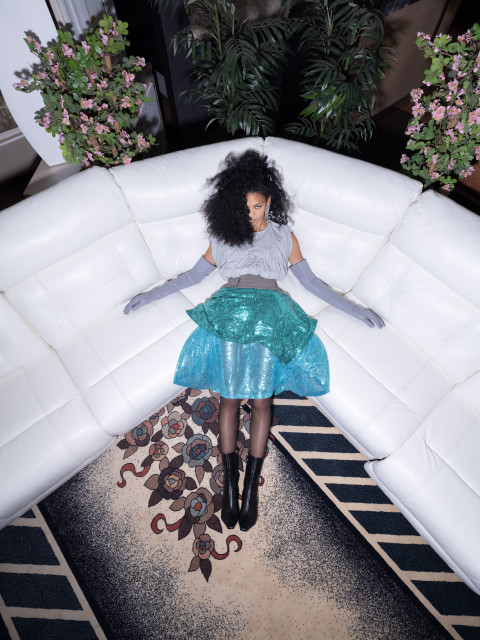
Skovgaard seems shy, but I realize that his shyness is actually contemplation. He speaks slowly and carefully, like he wants you to not only understand what he’s saying, but how he arrived at the thought.At first, his garments were more straightforward: hand-woven jackets with goose feathers, knit dresses with distressed Brooks bouquets, and woolen caps. But he wanted to experiment by mixing his woven fabrics with ones he found at the thrift store or flea market in Copenhagen. What emerged was something weirder: a baroque, ’80s-prom fever dream.“I like working with things that I don’t find flattering at first,” he says. His silhouettes are perverse and his fabric combinations oftentimes ignore the rules of taste. Skovgaard’s signature is contrast: A kitschy ’80s lace wedding dress works because Skovgaard pushes past the cliché and edges into perverse—the basque waist on the voluminous silhouette subtly dropping lower than usual is sensually sacrilegious. Or, how about: a baby-pink bulbous dress with disco sequin fabric that veers on playful, but not infantilizing, because it opts for a more mature ’50s silhouette. The garments are drenched in historical references, but not constrained by time. It’s because Skovgaard is more interested in playing with these ideas, often from the ’80s and the renaissance and baroque eras, and making them strange, rather than cloning the original.“I think that’s what makes it the most fun for me,” he says. “Working with cuts or colors or fabrics or things that I don’t necessarily like, but then making it into something that I really start liking.” And, at the root of that is his desire to find the answers to those questions. Pushing the boundaries of his perception of what’s beautiful, and the wearer’s.
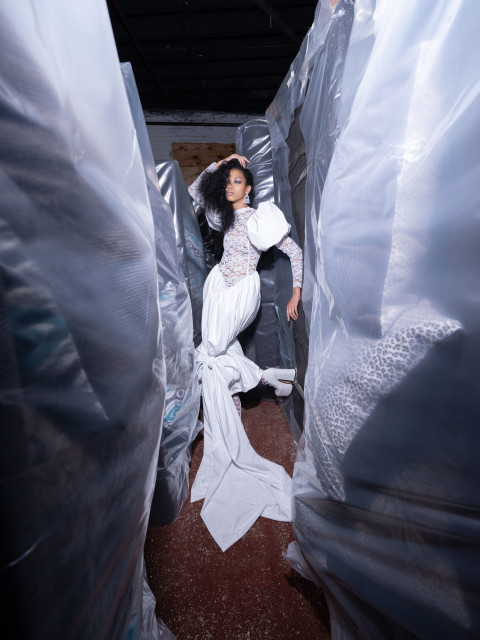

It’s when he talks about his mom that he’s the most lively, riffing on how she taught him about Grace Jones and Jane Fonda; imprinted memories that continue to influence his point of view. Skovgaard didn’t have professional fashion experience, but his mom noticed his interest in making clothes. In high school, after his mother saw him sewing his DIY creations, she suggested he take sewing lessons from the local seamstress. “I would go there one day a week for four hours in the evenings.” Soon after, his mother started commissioning him to make her garments.There’s a photo of his mother that he keeps in his studio. She’s wearing a white bandeau dress with a tulip-shaped bottom, a red elastic waist belt, and red shoes with her hair in a big bun. “I keep looking back and thinking about her own thoughts on this dress: Why did she decide to put white together with the red color?” His mother, who was an aerobics instructor in the ’80s, continues to be his main source of inspiration. It’s largely why his brand has so much influence from that era. “I’m almost 30, and she was around my age at the end of the ’80s and the start of the ’90s. As a child, she would tell me about her youth when she was growing up. I wanted to know, how was Copenhagen looking back then? What clothes was she wearing? What music was she listening to? Who were her idols?”
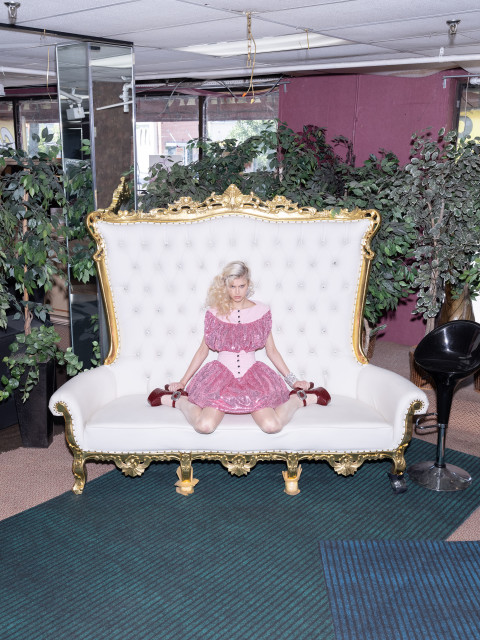
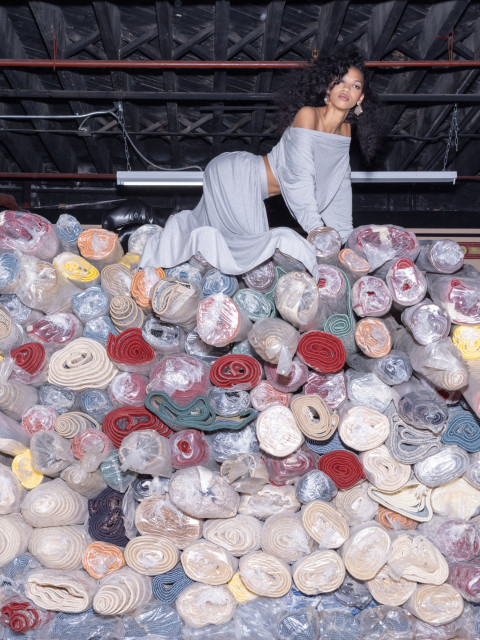
He frequently takes trips to museums; two he frequents are the National Museum of Denmark and the Rosenborg Castle, to ask questions and draw inspiration from what the women in renaissance and baroque paintings wear. “What’s the thought behind doing a dress like this? Where is she going? Why is this so big?” One of his favorite portraits is “Portrait of a Lady” by Rogier van der Weyden. In it, there’s a woman in a black dress with a bright red belt, sitting in front of a dark background. There’s a veil covering her hair and her eyes are slightly looking down. “It makes me think about what she’s looking at,” says Skovgaard. “There’s something about the composition and the contrast in colors and light that really draws my attention.”Right now, he’s trying to figure out what he likes about a Danish floral fabric that he always saw in homes growing up, as tablecloths and curtains. “It looked horrible in a way.” But recently he found a lot of the fabric at the thrift store and was “weirdly attracted to it.” Now, for his upcoming collection, he’s working out why: “I’ve been really trying to combine it with other fabrics and see what techniques we can use to make it something else,” he says.Skovgaard doesn’t always find the answers to his questions. He still doesn’t know exactly why he likes some garments he’s made.“There’s some pieces where I might change my own view on it,” he says. “Maybe there was something that I didn’t like and I’m not really sure what it is, but then maybe a few months later it sort of changes and evolves into something else.”
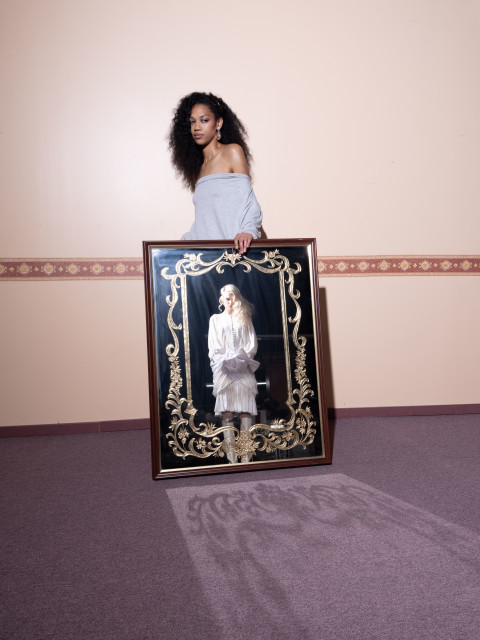
New York Magazine, Teen Vogue, Elle, Complex, Ridiculous Little Things.
